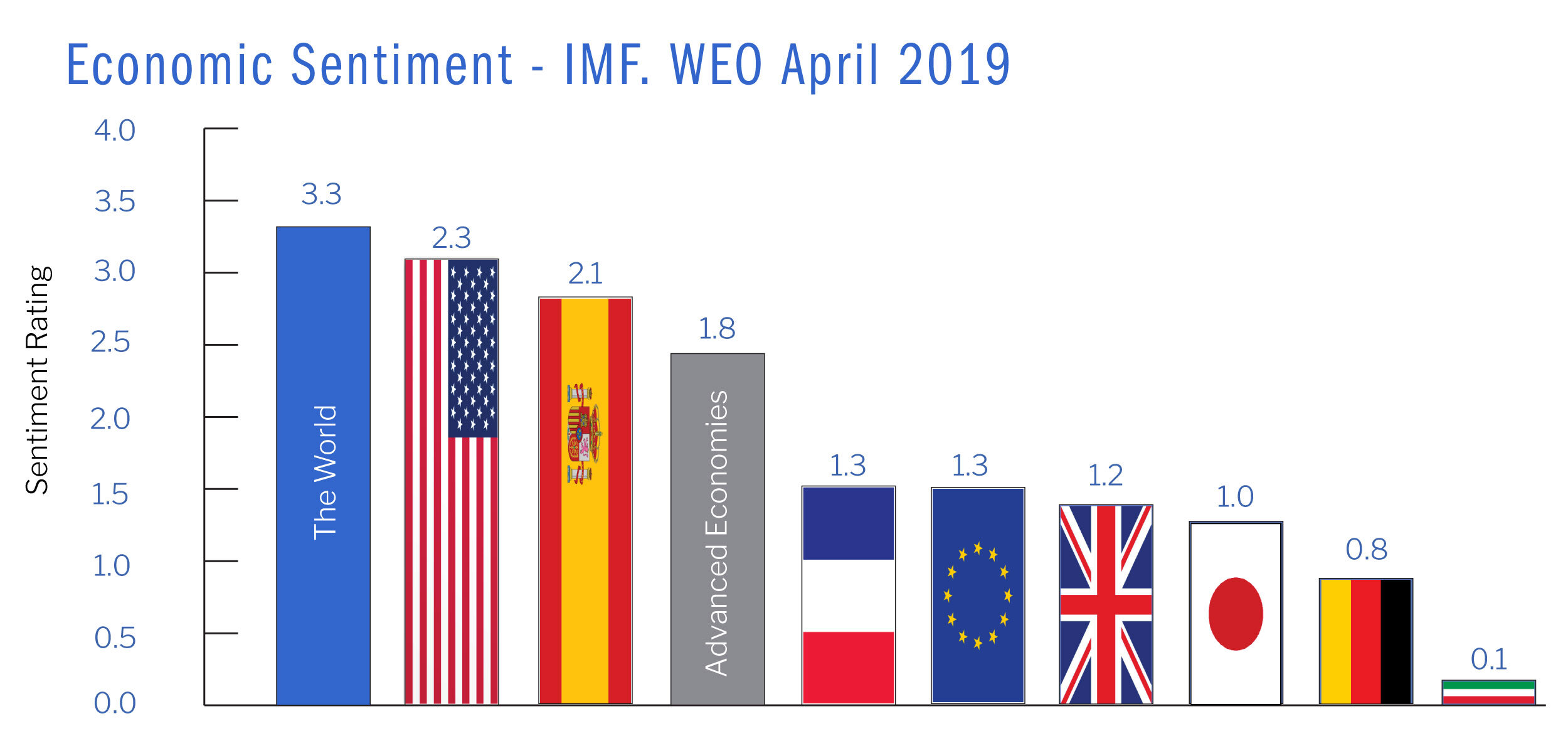The Economic Landscape of Spain
Author: John Scott - Head Of Institutional Investments @ NdG
1. Spain, has a GDP of $1.3 trillion and a population of 46.6 million people, and is the fourth-largest economy in the Eurozone. Spain’s economy grew 2.6% in 2018, exceeding the Eurozone average. Forecasts for suggest GDP growth of 2.1% in 2019 and 1.9% in 2020.
2. Tourism has traditionally been one of Spain’s most important sectors. Record tourism has help to drive Spain’s economic recovery, yielding three consecutive years of more than 3% GDP growth since 2015.
3. Due to the 2008-2013 economic crisis, Spain’s unemployment rate rose to almost 27 percent in 2013. The unemployment rate has subsequently decreased to 14.5% in 2018 and is forecasted to decline to 12.2% by 2020.
4. Spain is home to dozens of multinational companies, including five of the world’s 10 largest construction companies as well as Europe’s second largest phone company. Major Spanish firms in the banking, telecommunications, infrastructure, and energy sectors have become global leaders.
5. The country is the world’s second largest tourist destination receiving 82.8 million foreign visitors in 2018 and ranks second in terms of receipts (expenditures) following the United States.
6. Spanish energy companies have traditionally invested heavily in the United States. The cutting-edge technology of major Spanish multinationals has allowed them to successfully undertake multiple renewable energy projects throughout the U.S. Spanish wind power companies are located over 20 U.S. states.
7. Wind energy was the second largest source of electrical generation in Spain in 2018. Installed wind capacity is ~ 23,484 MW. Spain is the fifth country in the world in terms of installed wind power after China, the U.S., Germany and India. Over 22,000 people work in the sector. The industry exports technology worth over EUR 2.5 billion per year. It invests around EUR 85.5 million annually in R&D. The wind energy contributes about EUR 2.4 billion euros to GDP, accounting for 0.31 percent of Spain’s GDP.
8. Spain’s premier position in the construction and transportation sectors has also enabled Spanish companies to be on the front line for major infrastructure, railroad, and metro projects. The success of the larger Spanish multinationals is gradually attracting the interest of their service providers.
9. Cross-border investment plays a key role in the bilateral U.S. - Spain economic relationship. Many large U.S. companies (automobiles, chemicals, pharmaceuticals, and industrial machinery) are present in the country. According to the Spanish Ministry of Industry, Trade and Tourism, U.S. investment in Spain is ~ $70 billion. It is estimated that U.S. firms in Spain employ over 163,000 people.
10. Over 50% of Spanish exports are made by foreign multinationals located in Spain. U.S. investors also hold significant portfolio investment in shares of some of Spain’s largest companies.
11. Spain is home to dozens of multinational companies, including five of the world’s 10 largest construction companies as well as Europe’s second largest phone company. Major Spanish firms in the banking, telecommunications, infrastructure, and energy sectors have become global leaders.
12. The auto equipment and parts sector is another leading sector. It is ranked the sixth largest in the world by turnover and the third largest in Europe. In terms of total vehicle production, it is the second largest in Europe and the eighth largest in the world.
13. Spain offers excellent potential as a source of visitors to the United States. Figures for 2018 show Spanish arrivals at 876,248, an increase of 6 percent over 2017, making it the 15th largest international market for the United States and the fifth largest in Europe
14. With more than 1,970 miles of high-speed rail, Spain is second only to China in terms of high-speed train infrastructure. Madrid has high-speed train connections with 27 cities.





